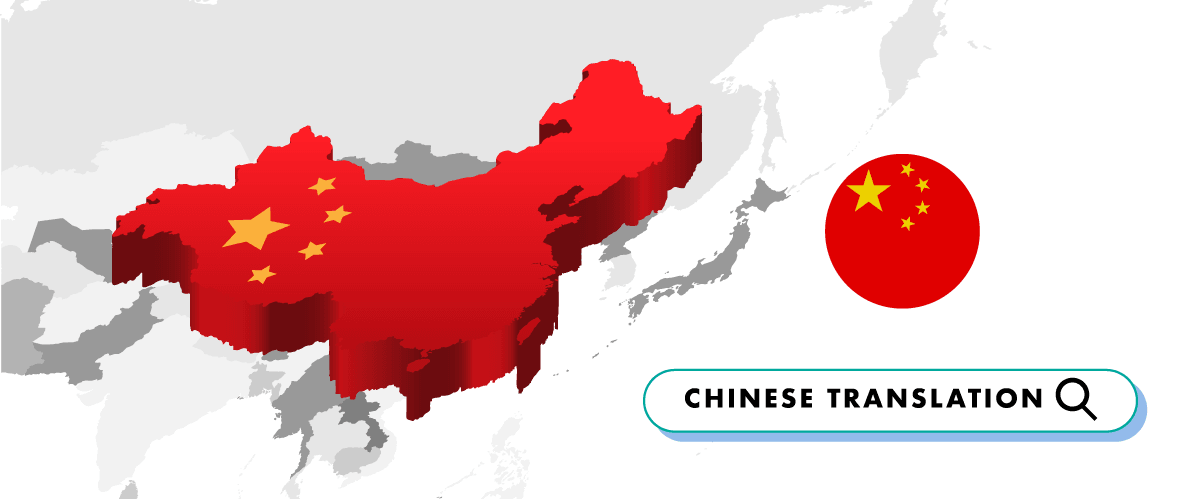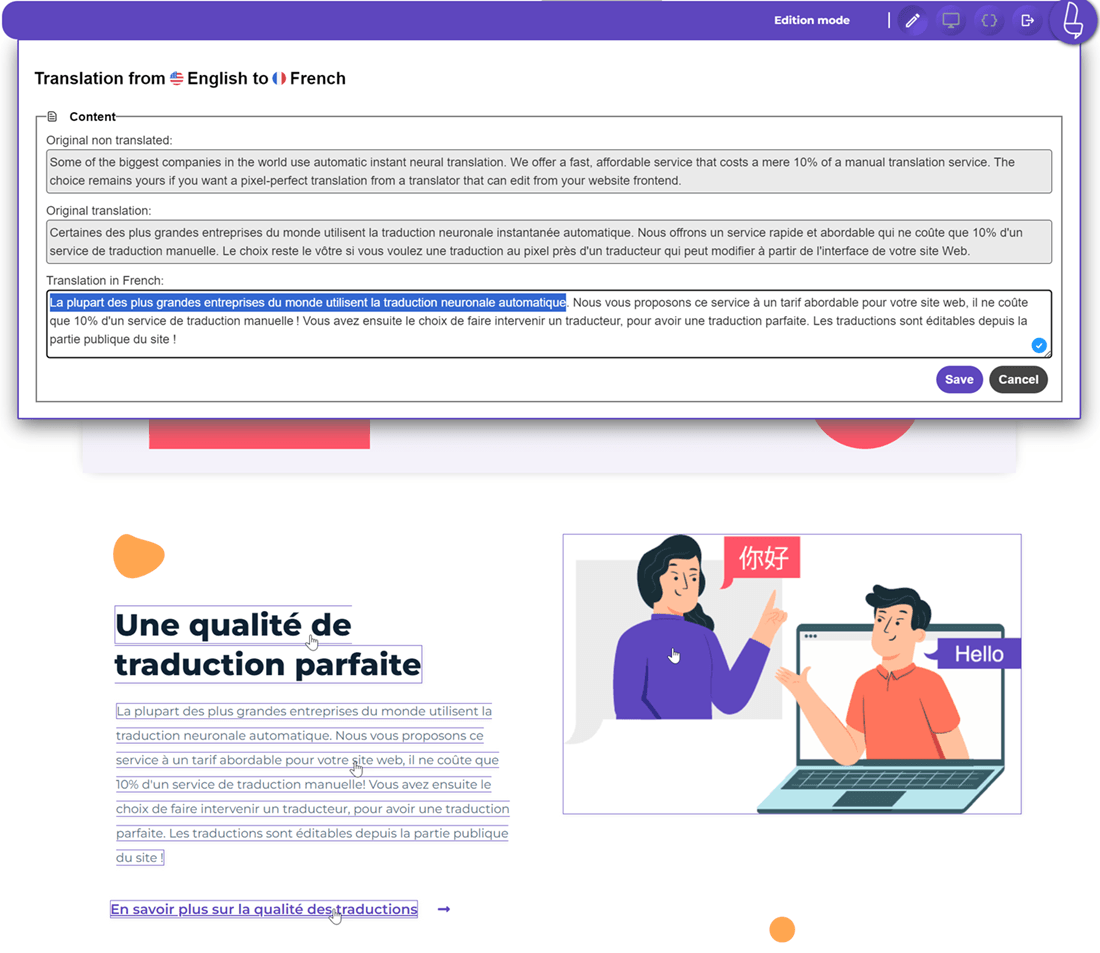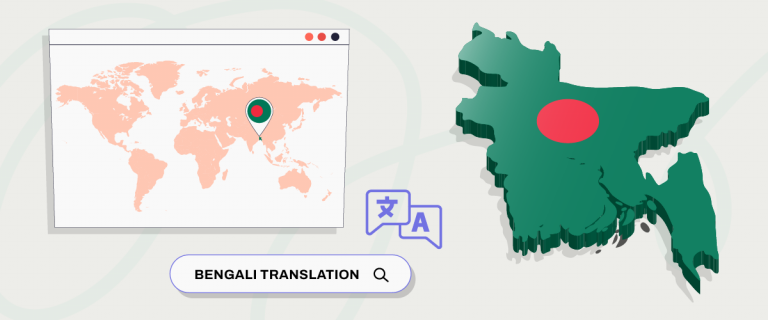Do you want to know how to translate a website from English to Chinese but are still confused about how to do it? English is number 1 on the list of the most used languages in the world for translation.
It’s no wonder that English is an international language and is often the default on websites. So, what if visitors from other countries want to understand the content, for example from Chinese?
Chinese is the second most used language after English. Therefore, for your website owners, it is important to understand how to translate a website from English to Chinese. Like how? Check out the explanation below.
What is the Chinese language?
As mentioned earlier, Mandarin is the second most spoken language after English in the world. However, you need to know that Chinese actually has many types, some of which are like.
Chinese language type
- Mandarin (Putonghua or Guoyu) – the official language of China and Taiwan, and the most widely spoken variety of Chinese. It is based on the Beijing dialect and is used as the standard language for government, education, media, and business.
- Cantonese (Yueyu) – spoken primarily in the southern province of Guangdong, as well as in Hong Kong and Macau. It is known for its distinct pronunciation, vocabulary, and grammar compared to Mandarin.
- Wu (Wuyu) – spoken in the eastern province of Jiangsu, as well as in Shanghai and surrounding areas. It includes several subdialects, including Shanghainese, which is a major dialect in its own right.
- Min (Minnan or Hokkien) – spoken primarily in Fujian province and Taiwan, as well as in parts of Southeast Asia. It is known for its rich tonal system and distinct vocabulary and grammar.
- Hakka (Kejia) – is spoken in several provinces in southern China, as well as in Taiwan and Southeast Asia. It is known for its distinctive pronunciation and grammar, and for being one of the most conservative varieties of Chinese.
- Gan (GanYu) – spoken in the central province of Jiangxi and surrounding areas. It is known for its complex tonal system and unique vocabulary and grammar.
So far, maybe you just think that Chinese is just Mandarin. Because Mandarin is the most widely used language variety. So, in this article, we will use Chinese Mandarin.
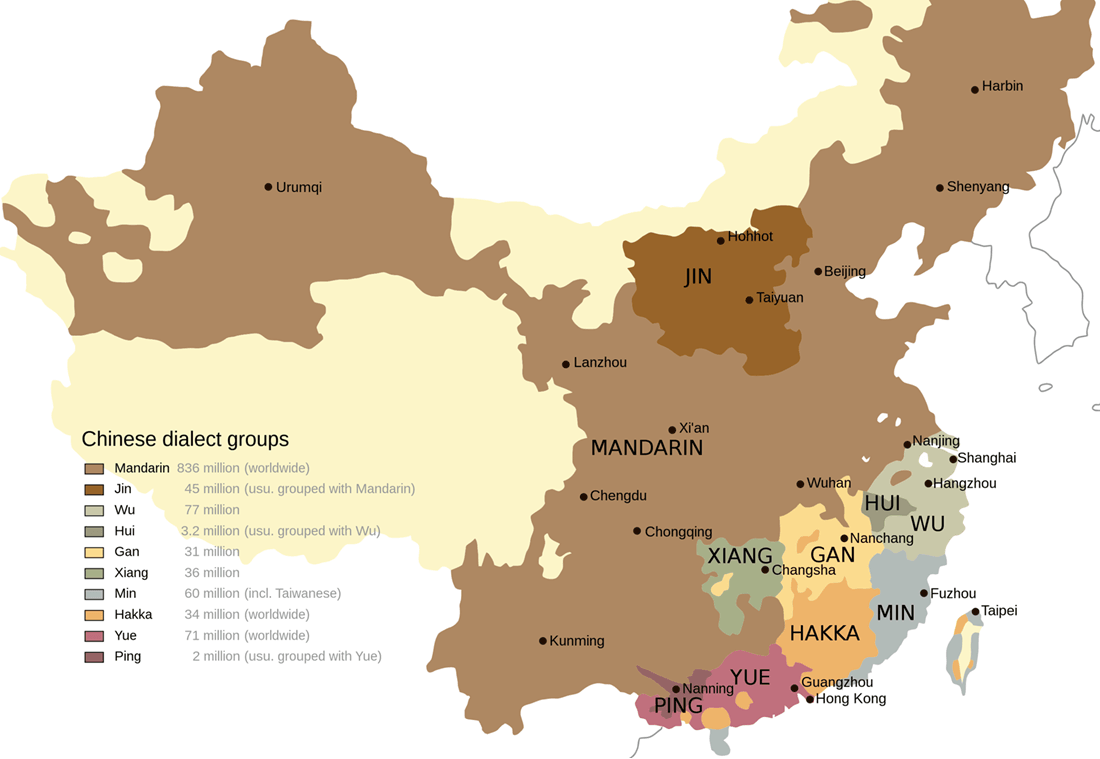
Differences between English and Chinese
English and Chinese are two very different languages in terms of their origins, structures, and usage. Here are some key differences between the two:
- Writing system: One of the most obvious differences between English and Chinese is the writing system. English uses the Latin alphabet, while Chinese uses a logo graphic system, where each character represents a word or concept.
- Grammar: The grammar of English and Chinese are also very different. English is an inflected language, meaning that words change their form to indicate tense, number, and case. Chinese, on the other hand, is not inflected and relies on word order to convey meaning.
- Pronunciation: English has a large number of vowel and consonant sounds, while Chinese has fewer. Chinese is also a tonal language, where the meaning of a word can change depending on the tone used.
- Vocabulary: English has a large vocabulary of words borrowed from various languages, including Latin, Greek, and French. Chinese, on the other hand, has a much smaller vocabulary but relies heavily on compound words made up of individual characters.
- Sentence structure: English tends to follow a subject-verb-object sentence structure, while Chinese follows a subject-object-verb structure.
Translation best practices from English to Chinese
After understanding what Chinese is like, its types, and how it differs from English, it’s time to know the best practices for translating from English to Chinese.
Below are some best practices for translating from English to Chinese.
- Understand the cultural differences: Before starting the translation, it is important to understand the cultural differences between English and Chinese.
- Use simplified Chinese characters: Simplified Chinese characters are commonly used in mainland China, while traditional characters are used in Taiwan and Hong Kong.
- Pay attention to sentence structure: In Chinese, the subject usually comes before the verb, and the object comes after the verb. It is important to adjust the sentence structure accordingly when translating from English to Chinese.
- Use proper tone: Chinese is a tonal language, meaning that the tone used when speaking a word can change its meaning.
- Hire a professional translator: If you are not a fluent Chinese speaker, it is best to hire a professional translator who is a native Chinese speaker and has experience translating from English to Chinese.
Several methods to translate English to Chinese

The first method is human Translation. This method involves using a professional translator or team of translators to translate text from one language to another. Human translation is often considered the most accurate and reliable method, especially for complex texts or texts requiring a high degree of cultural sensitivity. However, this method requires a lot of time and costs. As well as the possibility of human error.
While the second method is machine translation. This method involves using software to translate text from one language to another. This method doesn’t require human input to carry out translation tasks. Google Translate one of the most popular examples of machine translation.
How to translate a website from English to Chinese with Linguise
After knowing the two translation methods above, there is an automatic translation service that can be a solution for translating English to Chinese. Linguise provides an effective solution because it not only translates languages but is also equipped with SEO components that can still increase website rankings.
Other interesting features of Linguise are that there is a special dashboard to control and unify word usage, multilingual page views, page views per language, and many more.
Immediately, here’s how to translate websites from English to Chinese with Linguise.
Step 1: Register and get the API key
To get this API key, you need to register with Linguise first, you don’t need to worry, you can try the free feature first for 1 month without having to input credit card information.
After that you will get access to the Linguise dashboard, select Settings then scroll down you will find the API Key section as below.

Step 2: Add Chinese to your list
After that, in the Translation Languages column, enter Chinese in the following column by including the name of the language. Likewise with other languages.

Step 3: Install & configure the Linguise plugin
In order for the API to be installed on the website, you need to install the Linguise plugin first. This plugin is compatible with several CMSs such as WordPress, Joomla, and many more.
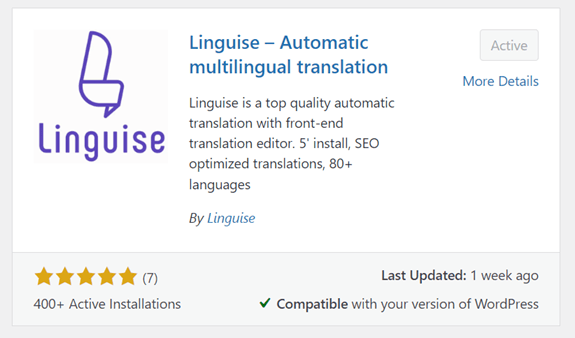
If the plugin is active, then enter the Main settings section, then paste the API key that you got earlier.

Step 4: Set the Chinese flag
After copying the API, you can also set the flag according to the language you want to set, in this case, Chinese. After that, don’t forget to click Save to save and apply changes.
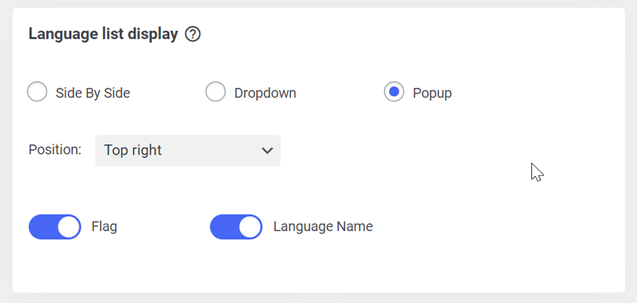
Step 5: Edit the translation via the front end
Sometimes there are some people who still lack confidence in the results of machine translation, so they often improve them by translating manually.
Linguise provides a front-end live editor feature for those of you who want to translate live on the website. You just need to create a translator account, select the language, and start translating directly. To access it, click Dashboard Linguise > Live Editor.
Examples here are from English to French.
To translate it, you only need to access the site you want to translate, then click on the Chinese flag logo, something like this is the result.
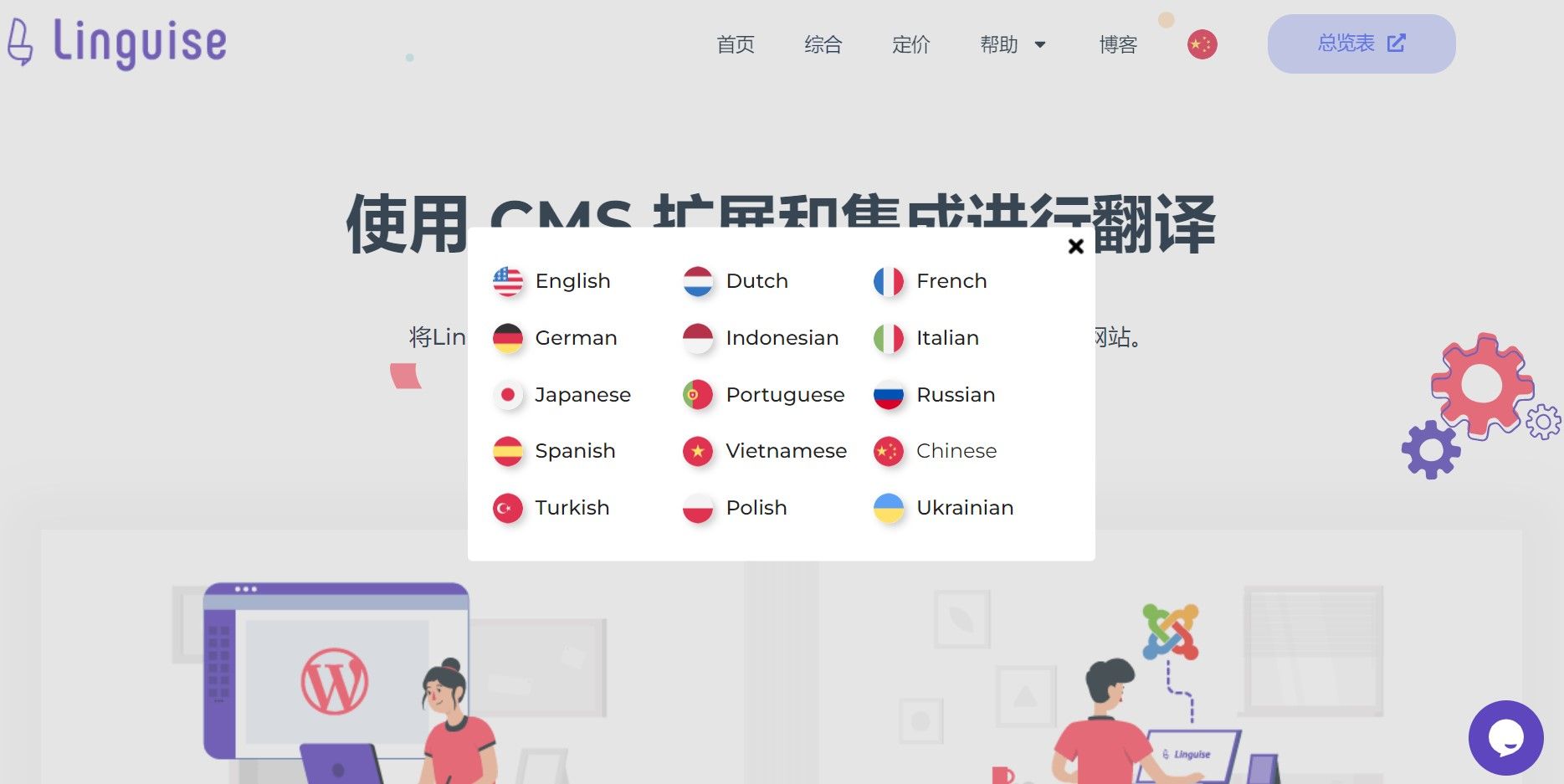
Why use Linguise to translate a website from English to Chinese?
Linguise is an effective and efficient website translation service solution. This service is compatible with various CMS and has easy configuration. With a choice of more than 80 languages, you can translate content into any language.
This way you can reach a wide audience, not only from your own country. Use the intuitive dashboard interface to make translation settings even easier.
Monitor how many words have been translated, what content is most translated by visitors, and what language is most often used only from the Linguise dashboard.
The live editor feature from the front end can make it easier for you when you want to improve your English-to-Chinese translation manually.
Linguise pricing for Chinese website translations
The price for the translation package that Linguise offers to translate Chinese is not expensive. You can even try the free trial feature first for 1 month.
You can translate up to 600,000 words for 30 days without needing to input a credit card. After trying the free service, you can extend the service by selecting the following 3 packages.
Package prices above are based on the number of words that can be translated.
START
- INCLUDED IN 1st MONTH FREE TRIAL
- 200 000 translated words
- Unlimited translated page views
- Unlimited languages
- 10% OFF compared to monthly prices
- 1 website per plan with one month free
PRO
- INCLUDED IN 1st MONTH FREE TRIAL
- 600 000 translated words
- Unlimited translated page views
- Unlimited languages
- 10% OFF compared to monthly prices
- 1 website per plan with one month free
LARGE
- REGISTER & SUBSCRIBE
- UNLIMITED translated words
- Unlimited translated page views
- Unlimited languages
- 10% OFF compared to monthly prices
- 1 website per plan with one month free
Now, translate the website from English to Chinese with Linguise!
Now you understand how to translate a website from English to Chinese. Using automatic machine translation services allows you to reach a wider global market and increase business growth.
Neural translation technology makes your translation updated every 3 months so you will never be disappointed. So what are you waiting for? Immediately register your account Linguise and become a Linguise user along with thousands of other users!

